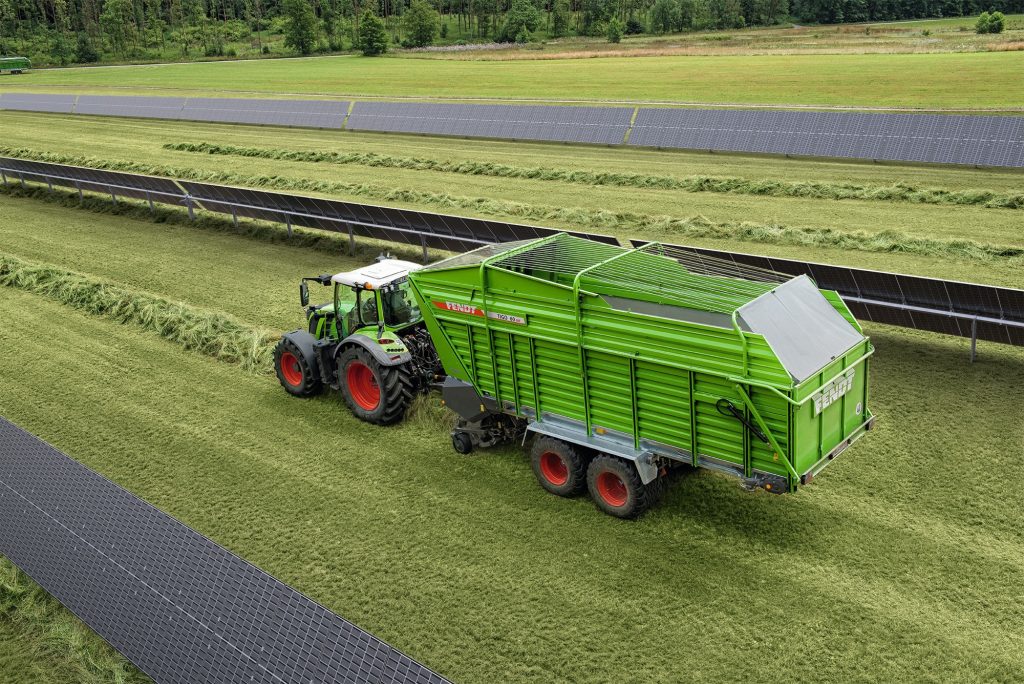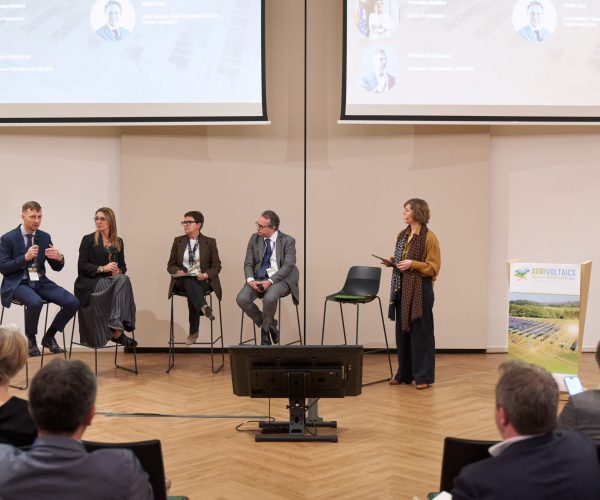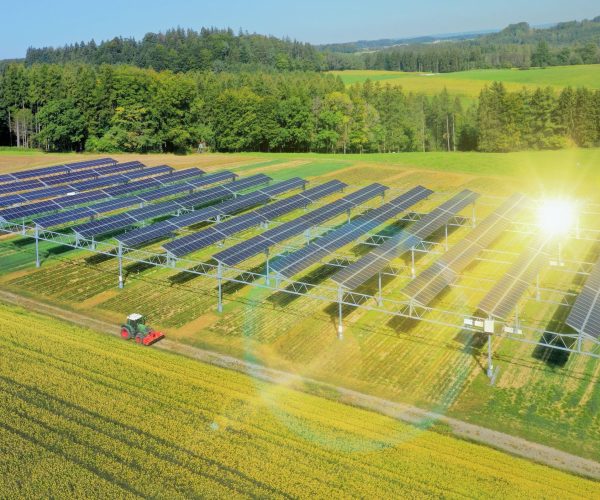Tackling the polycrisis: Agri-PV offers a win-win solution
In Granada, southern Spain, the Alhendín solar park exemplifies the potential of Agri-PV to address Europe’s pressing challenges. This project combines fixed, tracking, and Agri-PV technologies, showcasing a harmonious blend of solar energy generation and sustainable agriculture. We spoke with BayWa r.e. to explore the possibilities of Agri-PV and the policy frameworks needed for its expansion across Europe.

Photo: © BayWa r.e.
“There are several reasons why we see a huge potential for Agri-PV in Europe in the future. As a European society, we are facing several challenges, such as food security, climate change, biodiversity loss, and the transformation of our energy system to renewables. A poly-crisis demands multifunctional solutions. Providing green electrons for climate change mitigation is not enough in rural areas. We in the solar sector must bring additional values: socially, environmentally, and of course, economically. And Agri-PV is an excellent vehicle to generate these win-win-win situations along the Food-Energy-Water-Biodiversity Nexus!”
Stephan Schindele, Head of Product Management Agri-PV, BayWa r.e.
In the heart of Andalusia, the Alhendín solar park illustrates the potential of Agri-PV. This 54 MWp project, spanning 80 hectares, integrates solar generation, Agri-PV, community partnerships, and biodiversity. The site produces 96.8 GWh of renewable energy each year while also contributing to rural electrification and environmental sustainability. Ten percent of the project is designated as a 5 MWp Agri-PV site, using organic practices and no artificial fertilizers or pesticides. The design includes ample space between rows, allowing agricultural machinery to operate without interference. The Alhendín site, recently connected to the grid and expected to go live in autumn 2024, is a significant milestone for BayWa r.e.
However, what really makes the Alhendín site special is the unique rainwater collection system that has been integrated to aid module cleaning. This innovative approach reduces operational costs and addresses water scarcity, particularly in southern Europe. Water is collected via a gutter installed within the PV substructure. It is then directed to an appropriate storage facility.

Alhendin Agri-PV site © BayWa r.e.
In the European continent, there has been an increased pressure on freshwater resources in recent years, mainly in the southern countries due to competition between various sectors: agriculture, electricity, mining, service industries, households, and others. By collecting rainwater at a solar installation, we can contribute to addressing this problem. The water collected by these water management systems can be used for cleaning the modules, animal watering, and irrigating crops. This effectively mitigates the O&M costs of having to transport water to the site. Additionally, having water available on-site helps reduce the risk of fire in the project area.
“We believe these systems have huge potential for the future. The solar sector can bring additional value to the local communities by capturing rainwater during rainy periods and making it available in times of draughts.”
Stephan Schindele, Head of Product Management Agri-PV, BayWa r.e.
The project also includes a power purchase agreement (PPA) with Velux, a Danish roof window manufacturer, ensuring 100% renewable electricity for the company’s European operations. Moreover, the project was developed in partnership with two Spanish universities, which will, among other things, monitor the vegetation on the site. Workshops with local interest groups and educational school visits on-site have also taken place.
Agri-PV holds vast potential for Europe. By utilising just 1% of agricultural land for solar installations, the EU could generate approximately 1 TWp of solar capacity. This dual use of land aligns with the Farm to Fork Strategy, which aims to protect fertile soils for food production while limiting the expansion of settlement areas.

Photo: Example of Agri-PV in action © BayWa r.e.
BayWa r.e. would welcome a common EU strategy or guidance document for Agri-PV which should focus on the following objectives:
- Clear and easy definition of Agri-PV practices in Europe;
- Encouragement of all Member States by the European Union to develop holistic (comprehensive) Agri-PV support schemes, integrating policy coordination of the following five key areas: agriculture, energy, environment, finance/taxation, and building permitting;
- Inclusion of adaptation to the National Strategic Plans for the Common Agricultural Policy (CAP) to ensure the compatibility of agricultural activities and renewable energy production, including agricultural activities in Agri-PV projects as eco-scheme measures under the CAP regulations;
- and prioritisation in auctions/fundings schemes for projects that provide added value to the local communities.
Also, it is important to consider what should not occur: the worst-case policy scenario involves restricting the deployment of ground-mounted PV without establishing a comprehensive Agri-PV enabling environment or holistic policy regime.
The Alhendín solar park is a testament to the transformative potential of Agri-PV, combining food production with renewable energy generation. Well-designed Agri-PV projects can effectively tackle climate change by improving agricultural resilience and reducing CO2 emissions while addressing food security, biodiversity loss, and renewable energy needs. It is a win-win solution.
Explore 200+ projects on the agrisolar digital map
these might be interesting to you as well




